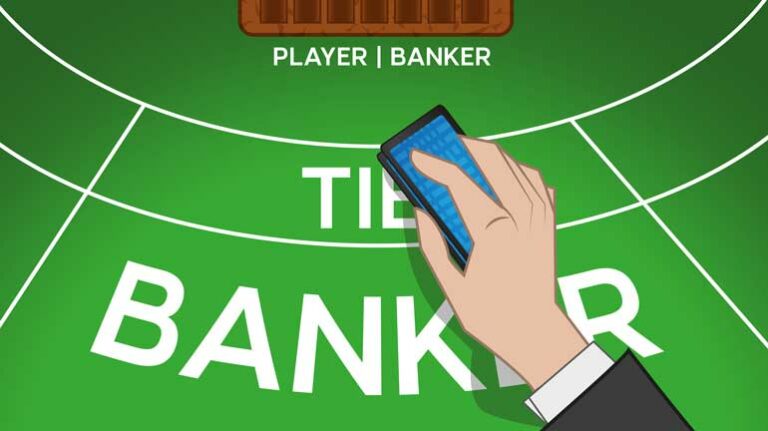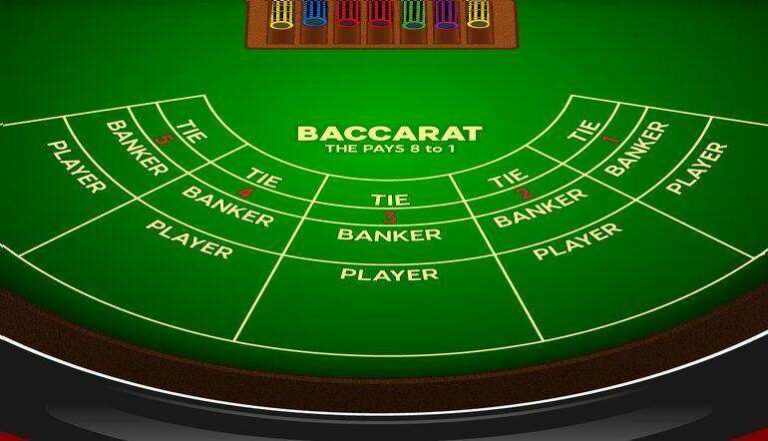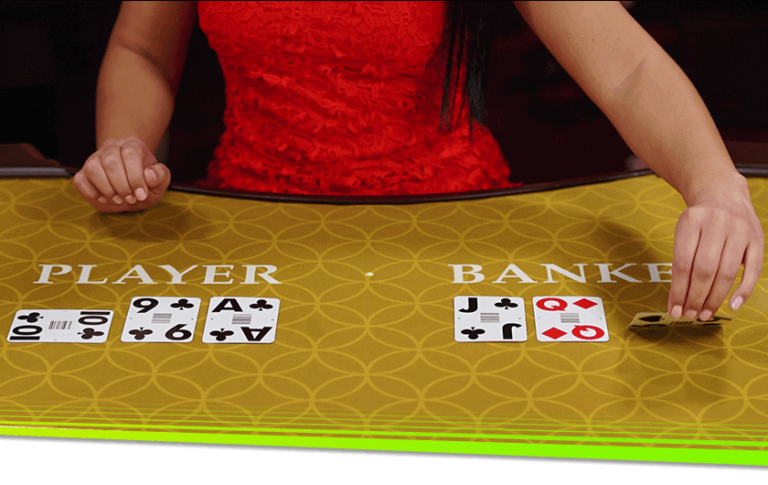What separates the good players from the bad players in poker is knowing when to fold.
Bad players will hang on to their hand for far too long, hoping they’ll find a way to win whereas good players know when the odds are against them and will save themselves the money.
Importance of Folding in Texas Hold’em

An important lesson to learn when you start playing poker is that you can’t win every hand. Sometimes you will just lose, that’s how the game works. Knowing when you’re likely to lose and being able to fold is a vital skill as it will save you money and therefore increase your win rate. This is also vital for professional players who are making money in poker.
This becomes even more important as we move to later streets where pots and bet sizes become bigger and calling incorrectly will be even more costly.
For example, we have 8♠7♠ playing $1/$2 No-Limit Hold’em. Our nitty opponent raises on the button to $6 and we call in the BB. The flop is J♥9♥2♠ and our opponent bets $13 – a pot size bet. We’re not getting the right odds to draw to our straight so calling would be a mistake. We can expect our equity on average to be around 20% against a made hand and we need 33% equity to call. As we only have 60% of the equity we need we can say that we’ve made an equity mistake for around 40% of the bet – or $5.20
The turn is the 3♥, we miss our draw. Our opponent now bets $39 into the pot of $39. Now our equity against a made hand has gone down to around 8% so we now only have around 25% of the equity required. This means our equity mistake is 75% of the bet – or $29.25, almost 6x the cost of the flop mistake.
If we give ourselves more equity by making the turn the 3♠, we’re still making an equity mistake of around 25% – or $9.75. Even with giving ourselves more equity than on the flop, the dollar cost of our mistake is twice as high on the turn compared to the flop. This is one of the common poker mistakes players make.
On the river calling when we know we are beaten is even costlier. If we’re playing against a nitty opponent like our example, we can expect them to almost never bluff, meaning that we will almost never win by calling with a bluff-catcher.
To continue the example the river is the 7♣ and our opponent bets the size of the pot for the 3rd time – $117. We know they’re a nit but something in our heads just convinces us they’re bluffing and we’ve made a pair so we can beat missed draws.
As we know our opponent is almost never bluffing, the cost of this mistake is equal to almost the entire bet of $117 – 23x the cost of the flop mistake.
Texas Hold’em Pre-Flop Folding Situations
If you want to win at poker you can’t play every hand, you need to know when you should fold preflop.
Playing Out of Position
Playing out of position puts you at a big disadvantage when playing poker. Poker is a game of limited information and the more you can collect the better your decision-making will be. By being out of position you are the first player to act and therefore get less information than the other players remaining in the hand. When you’re in the position you are last to act and have the added information of seeing the actions of the previous players.
There are certain preflop positions where you know whether you’re likely to be in a position or out of position post-flop. In the SB you are guaranteed to be out of position, as you are in the BB unless the SB is the only remaining player, and early positions such as UTG/UTG+1 are also likely to be out of position due to the number of players left to act that can call in position.
When you’re in these positions you should be playing a tighter range to compensate for the fact you’ll be playing out of position. Early position ranges are the tightest preflop ranges in part because of this fact. Players will play extremely tight from the SB if there has seen action before them, despite having 0.5bb posted, because of how much of a disadvantage they’re at post-flop.
Even in the BB with 1bb posted, you still have to fold a lot of hands to an open raise, especially if that raise comes from an early position. Because of the positional disadvantage, you can be folding as much as 80% of your hands against an early position 3x raise.
Out of Range Texas Hold’em Preflop Hand
You should have set ranges you will raise from each position if the action is unopened, and set ranges you will call/3bet with if a player has acted before you. These ranges will change depending on the position you’re in and the position of a player that may have opened before you.
If you’re dealt a hand that isn’t in the range for your position, it should be folded.
The earlier position you are in, the tighter your preflop opening range should be. At a 9-handed table, it’s common for players to raise only 15% of their hands – mainly comprised of strong pocket pairs, strong Ax hands, and suited broadway hands. As you get closer to the button you should steadily increase the number of hands you raise, including more suited hands, Ax/Kx hands, and pocket pairs. The button is where you should do the least folding as you should be opening at least 50% of the hands you’re dealt, even more, if you think the blinds play too tight!
The position of your opponent should also factor into your decision whether to fold or not. If your opponent has opened from an early position, their range is going to be very tight so we should fold even hands that look strong ATo on the BTN. However, if the raiser is opening from a late position then we know their range is going to be wider, so we can fold less often against their raise and still be profitable.
When You Have a Tight Image
This is where we start getting into the “meta-game” of poker – otherwise known as “they know that I know that they know…” etc., etc. If you’ve been getting a bad run of cards for the last hour and haven’t been playing many hands, people at the table will start to think you’re pretty tight – regardless of what trash you’ve been dealt.
This means that when you do play a hand, they’ll be expecting you to have a stronger range than usual due to their perception that you’re a tight player. You’ll find that the good players will start to adjust their ranges when playing against you, and in turn, they will play tighter than usual.
If you notice that a player is doing that, you should start to be concerned when they bet aggressively on you. Remember, they think you’re a tight player and are tightening their range to combat that. If you’ve shown interest in the pot and they’re playing aggressively back at you, they have a strong hand and are hoping to stack you.
In these situations, it’s wise to fold the majority of your range as good players won’t bluff tight players if the tight player has shown an interest in the pot.

Texas Hold’em Post-Flop Folding Situations
Once you’ve decided to play preflop, there are still situations where you need to fold post flop.
Not Having the Nuts on the River Against a Tight Player
Tight players are notorious for not bluffing enough and only betting when they have a strong hand. This can play into our hands if we’re drawing to a stronger hand or already have the nuts, however, if we don’t have a strong hand it’s better off to fold.
Now, “not having the nuts” may be a bit of an exaggeration – you don’t have to have the absolute nuts to call a river bet against a nit unless you know for a fact that they won’t bet the river without the nuts. However, you should be folding more often than not when a nit bets the river as they will only value bet with a very strong hand. If you only have a hand like one pair or a weak two pair you should be folding the majority of the time.
Good players will make thin value bets on the river that will sometimes get beat by a better hand. They do this because they know that the value they gain from having weaker hands call will outweigh the times someone calls with a better hand. If you see players check-back hands that could have been valued bets, consider folding against them more often on the river as the hands they will be value betting will be very strong.
C-Bets From an Early Position
When a good player or a nit raises from an early position, they’re going to have an extremely tight range. Most good players will raise around 15% from UTG in a 9-handed game, and nits will be even tighter than that. This means that on most flops they will have an extremely strong range made up of top pairs/overpairs.
Even on a low flop such as 9♠6♣2♥, the early position player will have all the overpairs in their range whereas we as the preflop caller will potentially only have TT or JJ. On other boards such as A♣5♠T♦ or K♣T♣7♠, the early position raiser will have even more of an advantage as they’ll have all the strongest Ax hands as well as AA and KK in their range.
Unless the flop is particularly good for the preflop caller – such as 7♠5♥4♥ – we should play very cautiously when facing an early position c-bet. Even against a small c-bet size a lot of our hands won’t have the equity to continue and should be folded. We want to continue with hands that either are likely to be the best hand (like a flopped two pair/set/straight) or hands that have the equity to continue against a strong top pair-type hand.
Significant Poker Tells
One of the great things about poker is that it’s not all about the cards and the positions and the situation – it’s also about people. The reason so many players are able to beat live poker but are unable to beat online poker is that these people have the ability to read their opponents and gauge the strength of their hand.
The online equivalent of being able to look your opponent in the eyes and see if they have it is timing tells. There’s very little information you can gather about your opponent’s thought process when you can’t see them but the amount of time they take to make a decision can tell you a lot about their hand. If a player acts quickly, we can infer that their decision was a simple one and didn’t require much thought whereas if they take a long time we can infer that they have a tough decision with a likely marginal hand.
When analyzing these poker tells, either live or online, we need to make sure that we have a very solid read that these are accurate. People are hardwired to find patterns and can end up finding ones that don’t exist which in this case will cost us a lot of money.
Verify your tells as much as you can before you use them to start making big laydowns against tight players.
Other Texas Hold’em Folding Scenarios
Truthfully, there are a lot of scenarios in Texas Hold’em where folding is the right option!
No Hand Improvement on the Turn
The turn is a big inflection point in No-Limit Hold’em. The pots get a lot bigger and there is only one card left with which to improve your hand. At this point, you should be deciding whether you want to commit with this hand or not when facing a bet.
Hands like straight draw and flush draws are very appealing on the flop as you have two chances to improve your hand and it’s not a certainty that your opponent will bet the turn. However, once you’ve missed on the turn and are facing a bet the best strategy is usually to fold unless you’re getting the direct odds to call.
This is also true of hands such as weak pairs, if you face more aggression on the turn and have not improved to a hand like two pairs or a set then it’s best to fold. You have other hands higher up in your range that you can defend with and it’s unlikely you’re getting the right price to try and improve.
On the Bubble With a Short Stack
Poker tournaments are unique in that the chips do not have an actual cash value but the size of your stack can be given an $EV amount based on how far you are in the tournament. For those who are unaware, the bubble phase of a tournament is the point of the tournament where only a few players need to be eliminated before the rest make the money.
At this point, most players are going to be trying to survive into the money to guarantee themselves a return on their investment. This is easy to do if you have a large or medium stack but is a lot harder when you’re short stacked.
If you do find yourself with a short stack in this situation, it’s best to play extremely tight and try to just make it into the money. This is because the amount of EV you’ll gain by playing pots and potentially doubling up isn’t as great as the EV you’d lose by getting knocked out of the tournament so close to the money.
You should be playing an extremely tight preflop range and also be very conservative post-flop.
Not Having the Nuts Against a River Raise
River raises are considered one of the strongest actions you can face in No-Limit Hold’em and is one of the most under-bluffed spots by both recreational players and regulars. River bets themselves are usually considered strong, especially if the aggressor has bet the flop and turn, so it stands to reason that a river raise would be considered even stronger. By raising a river bet you’re saying that you can beat the majority of hands that your opponent is betting for value, which would be a very strong hand.
Due to the fact that river ranges are usually extremely strong and the fact that they’re under-bluffed, you should play very cautiously when facing one. Most of the time, the most profitable decision against river raises is to fold due to how often they’re a very strong hand.
If you don’t have the nuts or the near-nuts and are facing a river raise, it’s likely best to fold.
How Poker Professionals Fold in Texas Hold’em
When you’ve got a hand you’re going to fold, it’s easy to completely lose interest in the hand and go back to scrolling through Twitter on your phone. However, if the action isn’t on you it’s important that you don’t give away that you’re planning on folding your hand as it gives information to the player whose turn it is. Not only could this impact your ability to win the hand by bluffing if they check, but it can also negatively impact other people who are left in the pot which is unfair.
If the action is on you and you’ve folded, you should still be following how the rest of the hand plays out. Knowing what happens in every hand allows you to track how your opponents are playing as well as pick up on any tells they might be giving off.
When playing multiple tables online, one way to make sure you maximize your decision-making time is to focus on the tables where you have a playable hand and allow yourself to time down on the tables where you know you fold. This way you allow yourself to put all of your thought into the hand that requires the most attention, and aren’t distracting yourself by being dealt a new hand on another table.
Whilst folding isn’t much fun, knowing when to fold is important if you want to become a profitable poker player
This article was published on July 17, 2022, and last updated on June 30, 2022.



















